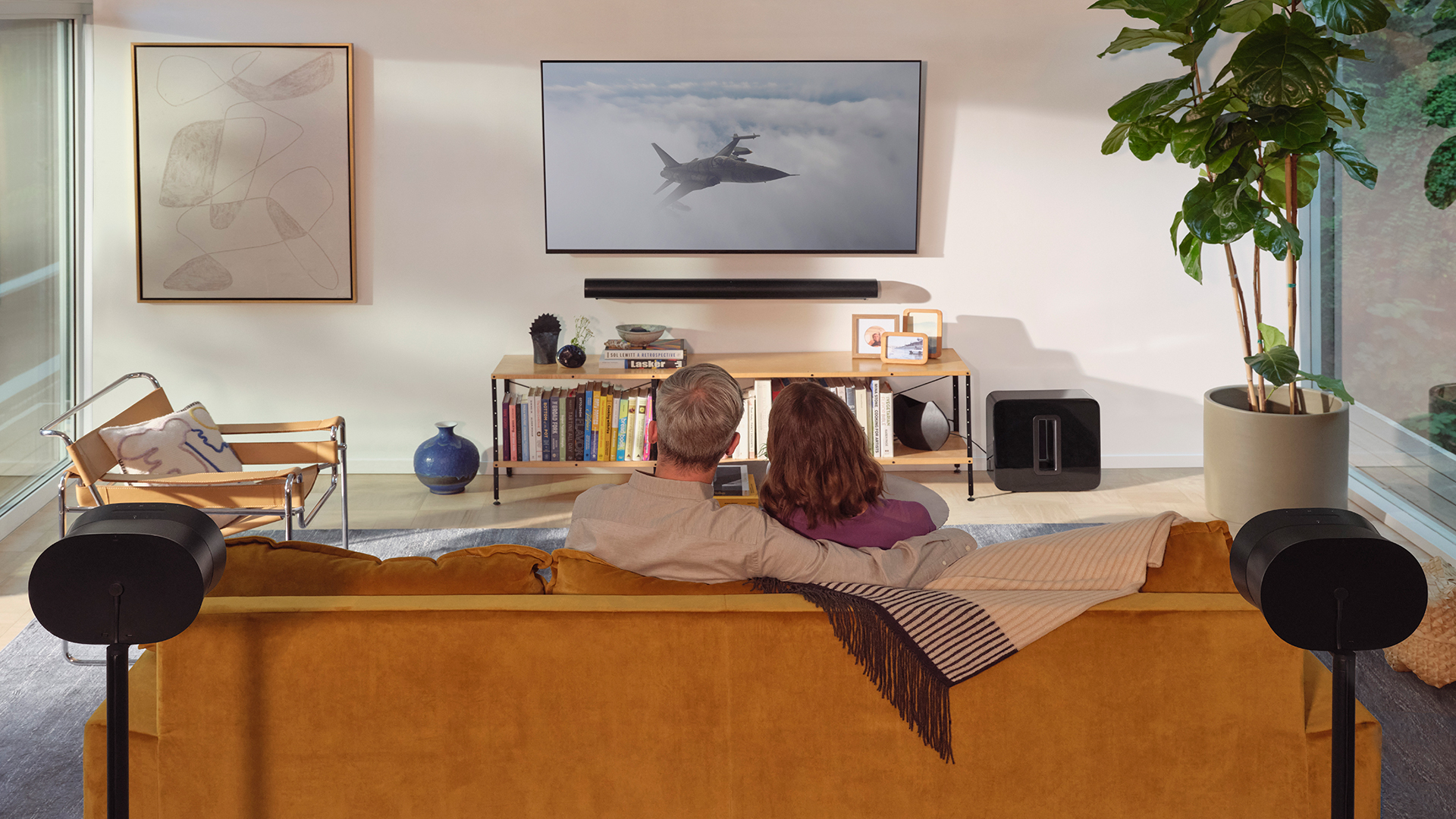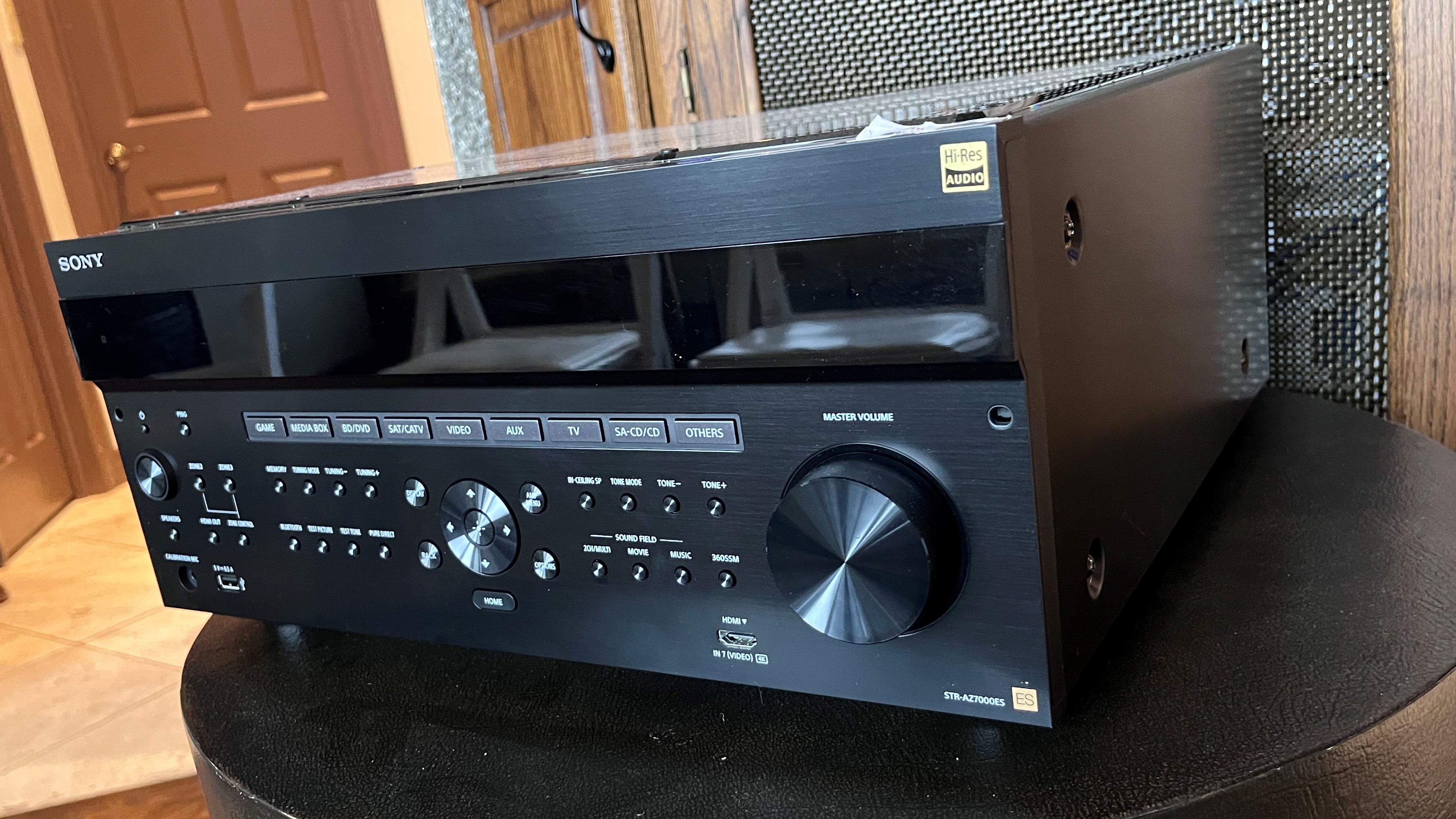How wireless home theater audio systems can rival wired ones
Same sound, less wires

Wireless is in, and wired is out. But what does that mean for home theater? For ages, home theater audio has mostly involved passive speakers wired to an A/V receiver (herein “AVR”), with the speakers spread around a room to create immersive sound. But now, there are home theater systems comprised from the best wireless speakers and the best Dolby Atmos soundbars that offer just about every feature under the sun – Dolby Atmos, DTS:X, IMAX Enhanced, HDMI 2.1 pass-through, room correction processing — and they bring cord-free convenience to boot.
For TechRadar's Home Theater Week, let’s take a look at the current state of wireless home theater audio. I’ll go over the advantages of different setups, starting with a few systems as examples, and will then discuss considerations you’ll want to make in figuring out whether to make your home theater wireless or stick with wires.
The price of going wireless
Wireless home theater systems are a premium product and can be pricey. To cite two examples, I’ve been using the Sony Bravia Theater Quad system, a four-unit setup with 16 total speakers (four per unit) that costs $2,500. I’ve also spent time with the Sonos “Premium Surround Set with Arc,” a $1,797 kit that includes a Sonos Arc soundbar and two Sonos Era 300 speakers for surrounds.
These two setups are popular wireless home theater audio systems, but you can find alternatives for even less. Sonos’ own “Immersive Set with Beam” is just $1,426 for a Sonos Beam soundbar, Sonos Sub Mini subwoofer, and two Sonos Era 100 speakers.Yamaha has also recently introduced the True X Bar 50A, which includes a wireless subwoofer for $699 that can link up with a pair of True X Speaker 1A units at $149 apiece to get you a wireless surround setup with a subwoofer for $1,000.
To get a 5.1.2-channel wired setup comparable to the Bravia Theater Quad or Sonos Arc system, you’ll be pricing out an AVR, wiring, and speakers. Pricing for wired home theater audio systems is all over the place. A respectable 5.1.2-channel AVR can be found for as little as $449, and from there, you’re left to build out the speaker configuration. You can get a Klipsch home theater speaker pack for $1,199, and Monoprice has a 5.1.4 setup available for just $209. Depending on your choices, you could wind up with a cheaper system or a far more expensive one.

Wireless home theater speaker advantages
We’ll get the easy one out of the way: wireless home theater speaker systems are wireless. Also, a system like the Sony Bravia Theater Quad is incredibly easy to set up. You just plop the appropriate speaker unit into a corner of your viewing area, run a wire to a nearby power outlet, connect a small receiver unit to your audio source, power it up, and you’re off to the races. It’s a similar deal for a Sonos setup, except that it requires linking the speakers together as a surround system through the Sonos app. But the wiring is just as easy (or easier because the soundbar takes on the role of an AVR and front-left center, and front-right speakers in a traditional wired home theater system). Even the subwoofers you pair with these systems link up wirelessly. This makes moving speakers easier and also means you don’t have to have wires running all along the floor, trim, or through your walls.
For the Sony Bravia Theater Quad, wireless transmission from the receiver to the speakers also means it can easily accommodate changing setups. I went from using one of the best ultra short throw projectors at the front of my room to a long-throw projector at the back of the room, and I only had to move the transmitter, not the speakers. Moving an AVR would have meant completely redoing the wiring to the speakers.
Sign up for breaking news, reviews, opinion, top tech deals, and more.
Now, the power cables that connect to each speaker in these systems are still wires, so you don’t avoid wires entirely. But some, like Yamaha’s, actually use rechargeable battery-powered speakers for the rear surrounds, so you could ostensibly get even more wireless with such a wireless setup.

The math is done for you
If you’ve ever tried to kit out a wired speaker system before, you’ve probably run into a bunch of technical jargon you may have never seen before outside of physics class. Configuring a wired system requires an AVR powerful enough to run the speakers in the system, be it a 5.1.2-channel setup, or an 11.2.4 one. Make the wrong decisions on the specific AVR and speakers you buy, and you might experience poor audio quality. For instance, during setup you might improperly configure the crossover points in the AVR’s settings for the subwoofer and speakers, and that could create overlap or gaps respectively in the system’s frequency response, resulting in bloated or anemic sound.
With wireless systems, pretty much all the setup is handled by the manufacturer. The Bravia Theater Quad system knows whether a subwoofer is paired with it, knows which one, and knows exactly what adjustments to make to accommodate it. Sonos setups know which soundbar is paired with which surround speakers, and also whether there’s a subwoofer present, and will adjust the output to each appropriately. The individual speakers get all the power they need, so there’s no worrying about weak volume or blown-out speakers because you did your math wrong.
Even the listening space and seating positions can be automatically accounted for with Sony Bravia Theater Quad and Sonos systems, which provide special tools to optimize the sound for the room and the speaker placement. Similar capabilities are available on AVRs, but it’s not universal and not nearly as user-friendly.
Placement flexibility
With a wired home theater speaker system, those speakers are pretty much going to remain permanently installed. But that’s not necessarily the case for speakers in wireless systems. Take Yamaha’s for example. The True X Speaker 1A links up with Yamaha’s soundbar for wireless surround, but if you’re going out to a picnic, you can snag it and bring it along as a portable Bluetooth speaker.
Sonos speakers, like the Era 300 and Sonos One, can also be repurposed outside of a surround setup. It takes a bit more work because you’ll need to reassign them in the Sonos app, but the potential is there if you upgrade your setup down the line or want to use the surround speakers in a temporary whole-home audio setup for a party.

Compact footprint
The speakers in a wired setup can be any size, but most are fairly large compared to those in a typical wireless system. Sony’s Bravia Theater Quad system, for instance, has a very small overall footprint with a compact receiver and 2-inch-deep speaker units. It could all fit together in the same physical footprint a typical AVR would take up on its own. And Sonos’ Era 100 is also incredibly compact for a wireless speaker, measuring just 4.7 x 7.2 x 5.1 inches (120 x 183 x 131 mm).

Wired home theater speaker advantages
The difficult task of assembling a wired home theater audio system is that you need to pick all the parts. But that’s also one of the perks since you can pick and choose speakers that fit not only your audio requirements but also your aesthetics and available space. Floorstanding, wall-mounted, bookshelf, in-wall, in-ceiling – it’s up to you.
With that flexibility also comes upgrade potential. Where a Sonos setup requires waiting for a new soundbar, satellite speaker, or subwoofer to arrive to provide an upgrade path, you can upgrade any part of a wired speaker system any time you like. If you’re tired of your 5.1-channel setup and want to upgrade to an 11.2.4-channel Dolby Atmos rig, you could do so by buying a new AVR and adding a few extra speakers to your existing setup. Or say you want better dialogue clarity from the center channel – you can upgrade just that speaker and call it day. Such options are largely unavailable with wireless home theater setups, barring some more limited upgrade pathways (like swapping from a Sonos Sub Mini to the bigger Sonos Sub).
If you get crafty with the wiring, you might also find ways to make your setup appear almost as wireless as a true wireless system. Some folks will route speaker wire through walls and ceilings, though that’s admittedly a major chore. Speaker wire can hide along trim, under carpets, and behind bookshelves. Speaker wire comes in different shapes and sizes, too, so you can pick what’ll fit your needs (just remember that the wire gauge can also impact performance).
Whether you go wireless or wired for your home theater audio needs will ultimately come down to your level of patience for selecting, setting up, and adjusting the system. Wireless systems make the job easy, and wired ones require more work. Whichever path you take, you’ll be able to hear movie soundtracks with uncompromised quality, and you won’t necessarily have to spend an outrageous amount to get to that level.
You might also like...

Over the last several years, Mark has been tasked as a writer, an editor, and a manager, interacting with published content from all angles. He is intimately familiar with the editorial process from the inception of an article idea, through the iterative process, past publishing, and down the road into performance analysis.